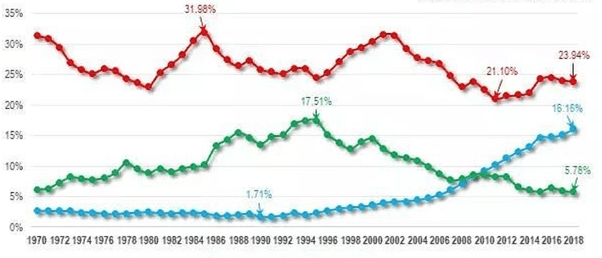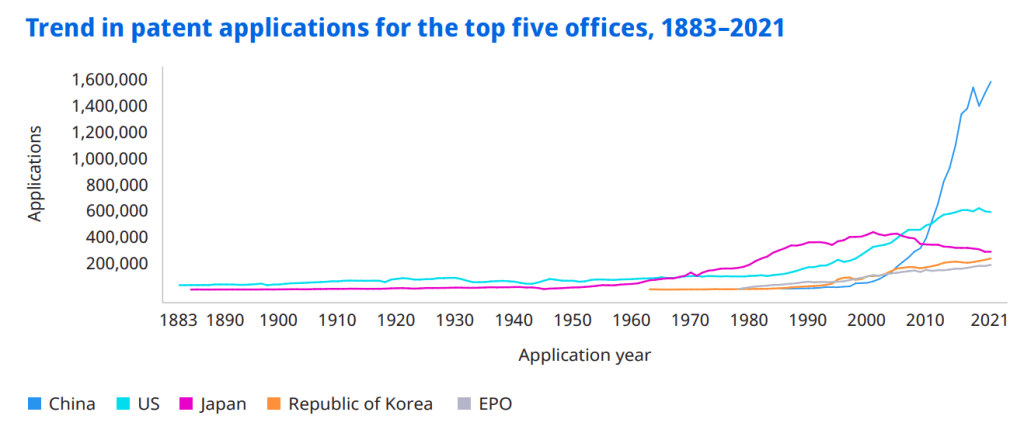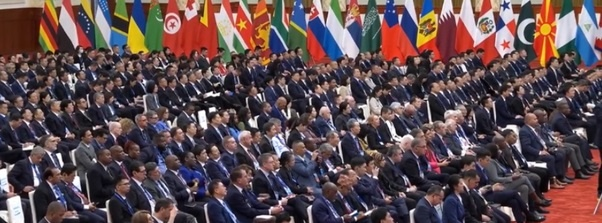Japan’s vs China’s Peaks
Quora by Aya Shawn // April 9, 2024
There are many standards to measure a country’s development level.
Japan made dazzling achievements in the 1980s. To be precise, it happened between 1985 and 1995. We call this period the Golden Age of Japan.
During this period, Japan’s GDP reached 60% of that of the United States, and at its peak reached 70% of that of the United States.
From a global perspective, Japan’s GDP in 1995 reached 17.51% of the world’s
This chart shows the changes in GDP of the United States, Japan, and China over the past 40 years.
Japan’s Golden Age was indeed a time of remarkable achievement.
In fact, it will not be until 2021 that China’s global GDP ratio reaches Japan’s level in 1995. So overall, China has reached the peak level of Japan’s golden age. However, considering the gap in land area and population, it is fair to say that China has not yet reached the level of Japan at that time.
In fact, China’s current per capita GDP is only US$13,000, making it a middle-income country; calculated as PPP, it is US$22,000, making it an upper-middle-income country. In any case, there is a big gap compared with Japan in 1990.
However, there is more than just GDP as an indicator to measure a country’s development level. In fact, it is flawed to only use GDP to evaluate a country’s development level.
1. Composition of GDP
In Japan during the golden age, the GDP bubble was very serious, especially the stock and real estate bubbles that had reached incredible proportions. The Japanese investment community once shouted the slogan “The housing value in Tokyo is enough to buy the entire United States.”
Take a look at this graphic showing changes in real estate values in Japan and China. We will find that even during the period when China’s real estate bubble was developing rapidly, it was nothing compared to Japan’s golden age.
Most of China’s GDP is still the real economy, which is much more reliable than Japan at the time.
2. Technology development
In Japan during the Golden Age, technology developed rapidly. It has obvious advantages in the fields of household appliances, automobiles, semiconductors and other fields. In the most dazzling year of 1987, the number of patent applications in Japan was twice that of the United States.
But China is different. The chart below shows the changes in the number of patent applications in various countries over the past 40 years. It can be seen that after 2005, the number of patent applications in China increased rapidly. In fact, in 2023, the number of new patents in China has reached three times that of the United States.
3. Industrial capability
In 1995, the Japanese automobile industry reached its peak. That year, the Japanese manufactured 13 million cars. At this time, the American automobile industry was also at its peak, and the two were basically equal.
In 2023, China’s automobile industry will produce 30 million vehicles, more than twice that of the United States.
4. Power generation
This chart shows changes in electricity generation in major countries. Economists generally believe that power generation is an important indicator of a country’s true economic capacity. We will find that in Japan’s golden age, power generation never reached 30% of that of the United States. Today, China’s power generation capacity is 200% of that of the United States.
5. Military strength
Japan is a defeated country and its military power has always been restricted. But in the 1990s, Japan’s military strength was still stronger than China’s. But Japan’s defense budget has never reached 10% of that of the United States, but China’s defense budget has reached 70% of that of the United States (PPP)
6. Political influence
During the Golden Age, Japan had greater political influence. The entire Southeast Asia, including China, has been greatly influenced by Japan. Japanese elements are widespread in these countries. But in other parts of the world, Japan’s influence is weaker.
China’s political influence far exceeds that of Japan. It is currently the most influential superpower in the world after the United States. It has strong political influence in Africa, the Middle East, and Southeast Asia. The “Belt and Road” trade organization led by China has already been joined by 151 countries, almost recreating the WTO. The China-led BRICS organization has expanded to 11 countries and controls 70% of the world’s oil and natural gas.
7. Independence
Despite Japan’s great achievements during the Golden Age, the country’s independence was incomplete. Japan cannot resist US containment and attack. They completely failed in the Japan-US trade war and signed the hugely influential “Plaza Accord.” This means that behind Japan’s great achievements, it is actually an economic appendage of the United States.
China has always been an independent country and is one of the few countries in the world with complete national sovereignty. The United States cannot contain China as it did Japan, making China’s wealth and achievements more secure.
In general, if we look at Japan in the golden age and China now on a per capita basis. It is obvious that Japan’s per capita wealth is much greater than that of China, and China is far from reaching Japan’s level.
But if we look at the strength and development level of a country as a whole, China is much stronger than Japan at that time.




